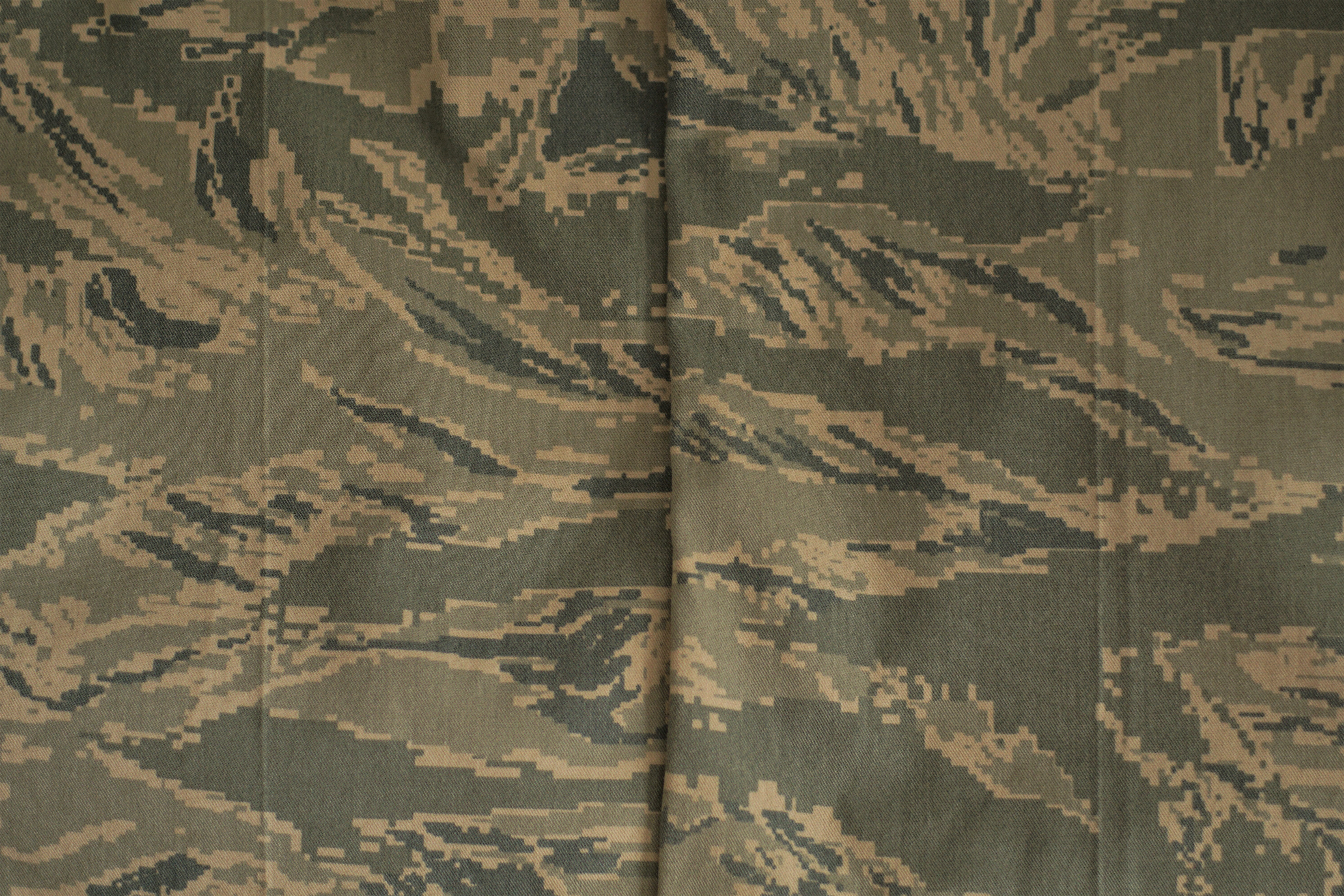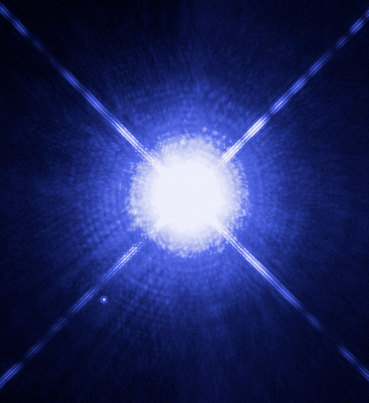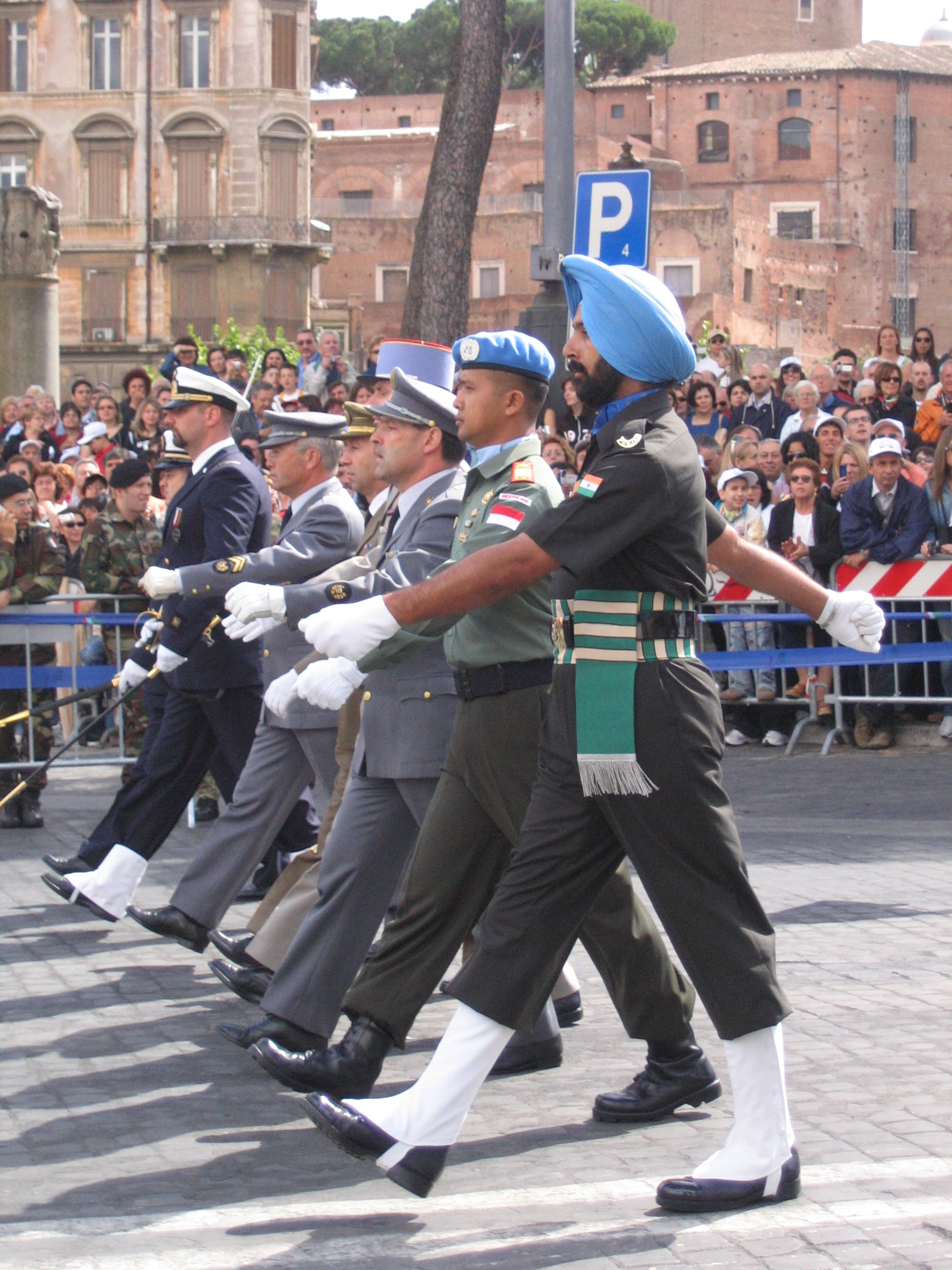|
Type 97 Service Dress
Type 97 Service Dress were the military uniforms used by all branches of the People's Liberation Army (PLA) in both the People's Liberation Army Hong Kong Garrison and People's Liberation Army Macau Garrison beginning in 1997. These uniforms have since been replaced by the new Type 07 series of uniforms, which were unveiled in late June 2007 in conjunction with the 10th anniversary celebrations of the Transfer of sovereignty over Hong Kong.07Õ╝ŵ¢░Õåøµ£Ź-ń®┐Õć║ńŠÄõĖĮń®┐Õć║µłśµ¢ŚÕŖøŃĆÉÕż¦ÕøŠ22P,22PIX of New Type 07 uniform, big fotoŃĆæ - ķŻ×µē¼Õåøõ║ŗ - õ┐Īµü»ĶĄäĶ«» - [Õåøõ║ŗõĖ╗ķóś] - ķÖåÕ£░ńŗéķŻÖ [Baidu] |
PLA Soldiers
PLA may refer to: Organizations Politics and military * People's Liberation Army, the armed forces of China and of the ruling Chinese Communist Party * People's Liberation Army (other) ** Irish National Liberation Army, formerly called the People's Liberation Army ** People's Liberation Army (Lebanon) ** People's Liberation Army of Manipur, India * Palestine Liberation Army, the military wing of the Palestine Liberation Organization * ProLife Alliance, a former UK political party Other organizations * Pacific Locomotive Association, operator of the Niles Canyon Railway in California, US * Pakistan Library Association * Pediatric Leadership Alliance, of the American Academy of Pediatrics * Phone Losers of America, a US phone phreaking group * Port of London Authority, England * Pre-school Learning Alliance, England * Public Library Association, a US professional association Science and technology * Principle of least astonishment, a principle in software design * Pr ... [...More Info...] [...Related Items...] OR: [Wikipedia] [Google] [Baidu] |
Navy Blue
Navy blue is a very dark shade of the color blue. Navy blue got its name from the dark blue (contrasted with naval white) worn by officers in the Royal Navy since 1748 and subsequently adopted by other navies around the world. When this color name, taken from the usual color of the uniforms of sailors, originally came into use in the early 19th century, it was initially called ''marine blue'', but the name of the color soon changed to ''navy blue''. An early use of ''navy blue'' as a color name in English was in 1840 though the ''Oxford English Dictionary'' has a citation from 1813. Variations Indigo dye Indigo dye is the color that is called ''A├▒il'' (the Spanish word for "indigo dye") in the ''Gu├Ła de coloraciones'' (''Guide to colorations'') by Rosa Gallego and Juan Carlos Sanz, a color dictionary published in 2005 that is widely popular in the Hispanophone realm. ''Indigo dye'' is the basis for all the historical navy blue colors, since in the 18th, 19th, and earl ... [...More Info...] [...Related Items...] OR: [Wikipedia] [Google] [Baidu] |
Airman Battle Uniform
The Airman Battle Uniform (ABU) is a U.S. camouflage combat uniform formerly worn by members of the United States Air Force, United States Space Force, and some civilian employees of the U.S. Department of the Air Force until April 2021. It replaced the Battle Dress Uniform and Desert Camouflage Uniform on 1 November 2011 after a four-year phase-in period. On 14 May 2018, The U.S. Air Force announced that all airmen will transition from the Airman Battle Uniform to the OCP Uniform. All airmen have been permitted to wear the OCP Uniform since 1 October 2018, and the wear out date for the ABU was 1 April 2021. The ABU is currently worn by the Civil Air Patrol. History 2000s 2003–2006: Prototypes and testing The first prototype of the ABU was unveiled in the summer of 2003. The early uniform prototypes consisted of trousers, an embroidered undershirt, and a blouse. The prototype camouflage pattern was a blue/gray, tigerstripe pattern, based upon the tigerstripe unifor ... [...More Info...] [...Related Items...] OR: [Wikipedia] [Google] [Baidu] |
Army Combat Uniform
The Army Combat Uniform (ACU) is the current combat uniform worn by the United States Army, U.S. Air Force, and U.S. Space Force. Within U.S. Air Force and U.S. Space Force, it is referred to as the OCP (Operational Camouflage Pattern) Uniform, rather than the Army Combat Uniform. First unveiled in June 2004, it is the successor to the Battle Dress Uniform (BDU) and Desert Camouflage Uniform (DCU) worn from the 1980s and 1990s through to the mid-2000s, respectively. It is also the successor to the Airman Battle Uniform for the U.S. Air Force. History Development In early 2004, some U.S. Army soldiers in Iraq were issued the "Close Combat Uniform", a variant of the Desert Camouflage Uniform (DCU) that featured new features such as shoulder pockets affixed with hook-and-loop "Velcro" fasteners, chest-worn rank insignia, and a new collar. The experimental features used on the CCU were eventually incorporated into the ACU, which was publicly announced in June 2004. Initial fiel ... [...More Info...] [...Related Items...] OR: [Wikipedia] [Google] [Baidu] |
MARPAT
MARPAT (short for Marine pattern) is a multi-scale camouflage pattern in use with the United States Marine Corps, designed in 2001 and introduced from late 2002 to early 2005 with the Marine Corps Combat Utility Uniform (MCCUU), which replaced the Camouflage Utility Uniform. Its design and concept are based on the Canadian CADPAT pattern. The pattern is formed of small rectangular pixels of color. In theory, it is a far more effective camouflage than standard uniform patterns because it mimics the dappled textures and rough boundaries found in natural settings. It is also known as the "digital pattern" or "digi-cammies" because of its micropattern (pixels) rather than the old macropattern (big blobs). The United States government has patented MARPAT, including specifics of its manufacture. By regulation, the pattern and items incorporating it, such as the MCCUU and ILBE backpack, are to be supplied by authorized manufacturers only and are not for general commercial sale, al ... [...More Info...] [...Related Items...] OR: [Wikipedia] [Google] [Baidu] |
Type 87 (uniform)
__NOTOC__ Type 87 may refer to: Military 20th century * Type 87 Chi-I, Japanese experimental medium tank of the 1920s * Type 87 armored car, Japanese version of the Vickers Crossley Armoured Car * Type 87 Vixen II, variant of the Vickers Vixen biplane of the 1920s * German Type U 87 submarine of WWII 20th and 21st century * Type 87 Self-Propelled Anti-Aircraft Gun, Japanese air defense vehicle * Type 87 ARV, Japanese armored reconnaissance vehicle * Type 87 grenade launcher, Chinese infantry weapon * Type 87 Chu-MAT, Japanese anti-tank missile * Type 87 assault rifle, a variant of the Chinese Type 81 * Type 87 anti-aircraft gun, a 25mm Chinese copy of the Soviet ZU-23-2 * Type 87 (uniform), the uniform used by People's Liberation Army The People's Liberation Army (PLA) is the principal military force of the People's Republic of China and the armed wing of the Chinese Communist Party (CCP). The PLA consists of five service branches: the Ground Force, Navy, Air Forc ... [...More Info...] [...Related Items...] OR: [Wikipedia] [Google] [Baidu] |
CADPAT
Canadian Disruptive Pattern (CADPAT; french: links=no, dessin de camouflage canadien, DcamC) is the computer-generated digital camouflage pattern developed for use by the Canadian Armed Forces. Four operational variations of CADPAT have been used by the Canadian Armed Forces: a temperate woodland pattern, an arid regions pattern, a winter operations pattern, and a multi-terrain pattern. CADPAT was the first digital camouflage pattern to be used operationally, having been issued in 1997 with the Canadian Armed Forces. The pattern became fully standardized within the Canadian Armed Forces by 2002, having completely replaced the olive-drab operational uniforms formerly used by Regular Force units. The multi-terrain CADPAT variant began development in 2019, and is planned to replace the temperate woodland and arid regions CADPAT variations. History Canada's desire for a new soldier system dated back to November 1988 and closely followed efforts in many NATO countries. The first res ... [...More Info...] [...Related Items...] OR: [Wikipedia] [Google] [Baidu] |
Blue
Blue is one of the three primary colours in the RYB colour model (traditional colour theory), as well as in the RGB (additive) colour model. It lies between violet and cyan on the spectrum of visible light. The eye perceives blue when observing light with a dominant wavelength between approximately 450 and 495 nanometres. Most blues contain a slight mixture of other colours; azure contains some green, while ultramarine contains some violet. The clear daytime sky and the deep sea appear blue because of an optical effect known as Rayleigh scattering. An optical effect called Tyndall effect explains blue eyes. Distant objects appear more blue because of another optical effect called aerial perspective. Blue has been an important colour in art and decoration since ancient times. The semi-precious stone lapis lazuli was used in ancient Egypt for jewellery and ornament and later, in the Renaissance, to make the pigment ultramarine, the most expensive of all pigments. I ... [...More Info...] [...Related Items...] OR: [Wikipedia] [Google] [Baidu] |
White
White is the lightness, lightest color and is achromatic (having no hue). It is the color of objects such as snow, chalk, and milk, and is the opposite of black. White objects fully diffuse reflection, reflect and scattering, scatter all the visible spectrum, visible wavelengths of light. White on television and computer screens is created by a mixture of red, blue, and green light. The color white can be given with white pigments, especially titanium dioxide. In ancient Egypt and ancient Rome, priestesses wore white as a symbol of purity, and Romans wore white togas as symbols of citizenship. In the Middle Ages and Renaissance a white unicorn symbolized chastity, and a white lamb sacrifice and purity. It was the royal color of the kings of France, and of the monarchist movement that opposed the Bolsheviks during the Russian Civil War (1917ŌĆō1922). Greek and Roman temples were faced with white marble, and beginning in the 18th century, with the advent of neoclassical archite ... [...More Info...] [...Related Items...] OR: [Wikipedia] [Google] [Baidu] |
Military Uniform
A military uniform is a standardised dress worn by members of the armed forces and paramilitaries of various nations. Military dress and styles have gone through significant changes over the centuries, from colourful and elaborate, ornamented clothing until the 19th century, to utilitarian camouflage uniforms for field and battle purposes from World War I (1914ŌĆō1918) on. Military uniforms in the form of standardised and distinctive dress, intended for identification and display, are typically a sign of organised military forces equipped by a central authority. Military uniforms differ not only according to military units but tend to also be offered in different levels of formality in accordance with Western dress codes: full dress uniform for formal wear, mess dress uniform for semi-formal wear, service dress uniform for informal wear, and combat uniform (also called "battle/field dress") which would equal casual wear. Sometimes added to the casual wear category is physic ... [...More Info...] [...Related Items...] OR: [Wikipedia] [Google] [Baidu] |
People's Liberation Army Ground Force
The People's Liberation Army Ground Force (PLAGF; ) is the land-based service branch of the People's Liberation Army and the largest and oldest branch of the entire Chinese armed forces. The PLAGF can trace its lineage from 1927 as the Chinese Red Army; however, it was not officially established until 1948. History In February 1949, the existing large number of armies and divisions were regularised into up to seventy armies of three divisions each. While some, such as the 1st Army, survived for over fifty years, a number were quickly amalgamated and disestablished in the early 1950s. It appears that twenty per cent or even more of the seventy new armies were disestablished up to 1953; in 1952 alone, the 3rd, 4th, 10th, 17th, 18th, and 19th Armies were disbanded. The PLA ground forces consist of conventionally armed main and regional units, which in 1987 made up over 70 percent of the PLA. It provided a good conventional defense, but in 1987 had only limited offensive p ... [...More Info...] [...Related Items...] OR: [Wikipedia] [Google] [Baidu] |
PLA Major General & Female 1st Lt
PLA may refer to: Organizations Politics and military * People's Liberation Army, the armed forces of China and of the ruling Chinese Communist Party * People's Liberation Army (other) ** Irish National Liberation Army, formerly called the People's Liberation Army ** People's Liberation Army (Lebanon) ** People's Liberation Army of Manipur, India * Palestine Liberation Army, the military wing of the Palestine Liberation Organization * ProLife Alliance, a former UK political party Other organizations * Pacific Locomotive Association, operator of the Niles Canyon Railway in California, US * Pakistan Library Association * Pediatric Leadership Alliance, of the American Academy of Pediatrics * Phone Losers of America, a US phone phreaking group * Port of London Authority, England * Pre-school Learning Alliance, England * Public Library Association, a US professional association Science and technology * Principle of least astonishment, a principle in software design * Pr ... [...More Info...] [...Related Items...] OR: [Wikipedia] [Google] [Baidu] |






